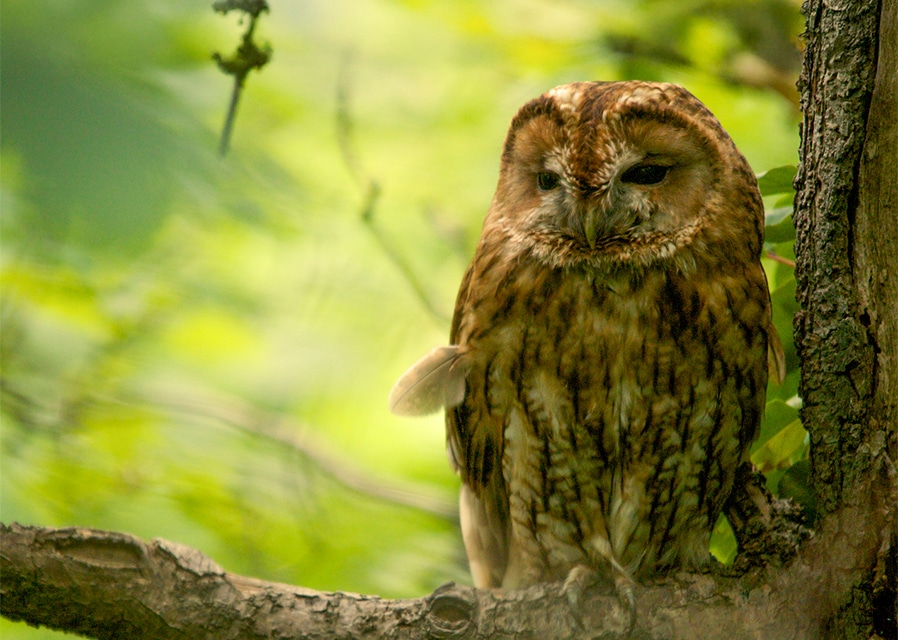You might automatically think that due to the shorter, colder days and distinct possibility of wintery showers, the best way to get your wildlife fix at this time of year would be to either open a book or watch one of Sir David Attenborough’s programmes whilst sat indoors. However, although a handful of creatures will be hibernating and some favourites have taken long journey’s south, winter has a wealth of wonders to offer in terms of wildlife watching.
Once the first snowfall of winter arrives, even if it’s just a light dusting, it opens up the prospect of catching a glimpse of mammals such as fox, deer, otter and badger.
As well as scouring the ground for wildlife clues, winter is a great time to look up into the treetops. Trees bare of leaves make spotting birds sat amongst their branches a whole lot easier and many bird species will be forming winter roosts. Large gatherings, high in the trees, provide distinct benefits for birds – bringing safety in numbers and much-needed added warmth to see them through the coldest nights. Birds to look out for include rooks, crows and jackdaws.
The sight and sounds of a massing corvid roost is a winter wildlife spectacle to be savoured. Whilst very different from the almost balletic displays of starling flocks during murmurations, it is still a wonderful experience not to be missed. The best time to track down bird roosts is about an hour before sunset – look out for small flocks of birds all heading in the same direction towards safe roosting spots to be in with a chance of finding the main roost. A good place to head is our Besthorpe Nature Reserve west of Newark, between the villages of Collingham and Besthorpe – where there is a sizeable roost on the island in the main lake – Mons Pool.
Winter is also a great time to watch ducks, geese and swans. Firstly, winter sees the highest numbers of birds present and males, or drakes, are often in their brightest plumage.
If visiting a wetland area such as Idle Valley Nature Reserve, off North Road on the edge of Retford or Attenborough Nature Reserve, south of Nottingham, look out for flocks of migratory geese or flocks of less common ducks such as goldeneye, goosander and pintail.
A winter treat you can often experience from the comfort of your garden or even from inside the house is listening out for tawny owls which are at their noisiest. Listen out for their familiar ‘twit twoo’ call. If you listen carefully, you may pick up the difference between the sharp ‘ke-wick’ call of the female and the male’s wavering ‘hoohoo’.
Make yours a wild winter with a visit to a Nottinghamshire Wildlife Trust nature reserve
With dozens of sites across the county, there is sure to be one right on your doorstep
Our Idle Valley and Attenborough Nature Reserves each have welcoming cafés and shops – the ideal places to head for a day out in nature. Enjoy a warming drink, stock up on wild bird food for your feathered friends or do a spot of Christmas shopping knowing that every pound spent is supporting nature’s recovery here in Nottinghamshire.
Details of all Nottinghamshire Wildlife Trust’s nature reserves, winter events as well as guides to a range of native species can be found at www.nottinghamshirewildlife.org.
Image: Tom Hibbert

